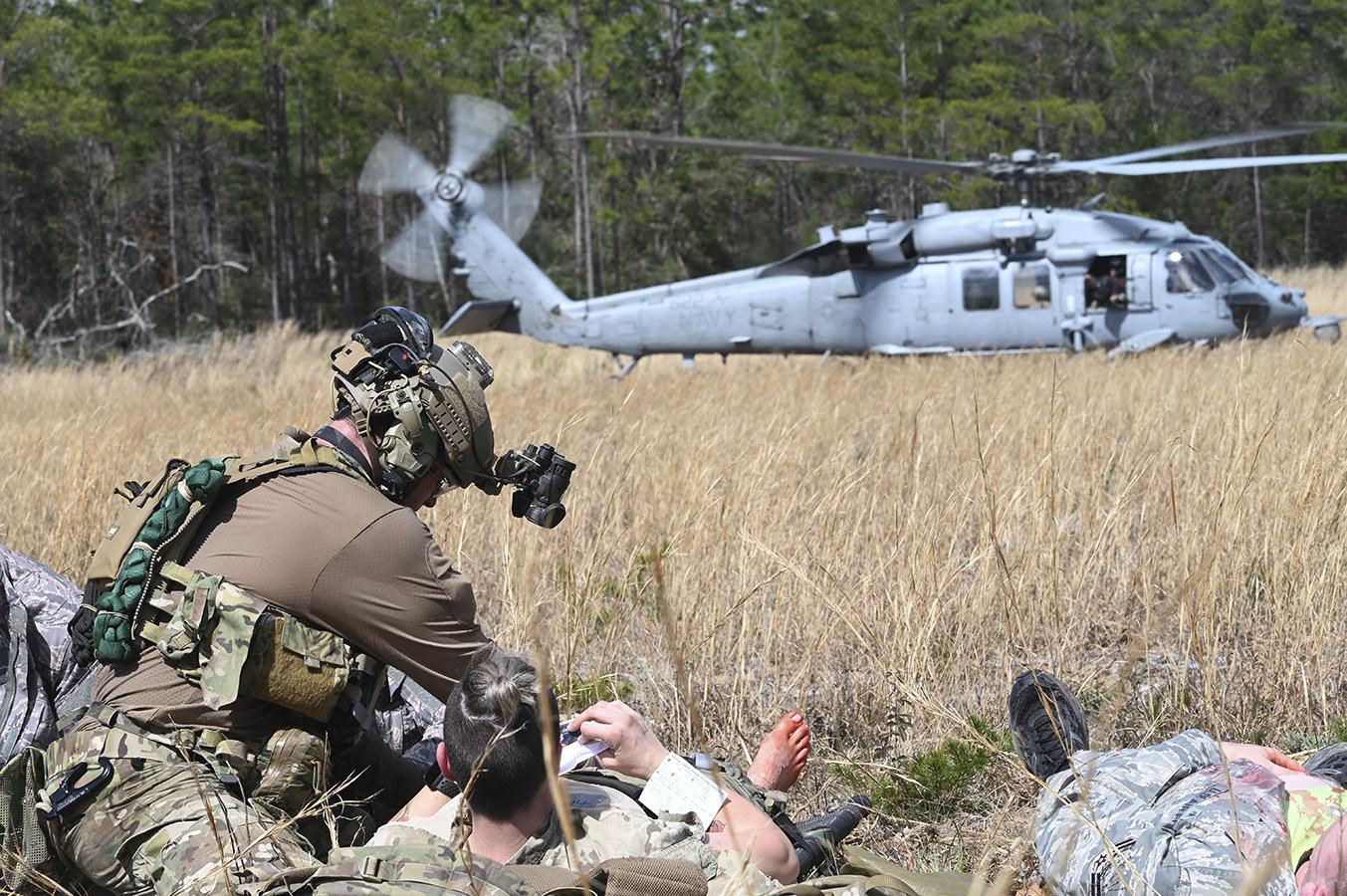
2 minute read
Squadron Updates - HSC-9 Tridents Participate in Emerald Warrior
HSC-9 Tridents Participate in Emerald Warrior
By LT Arnold Martinez, USN
Advertisement
From an underway aboard USS Gerald R. Ford (CVN 78) to a quick turnaround for an immediate departure to support Emerald Warrior--a joint exercise with Air Force Special Operations Command--the World Famous Tridents of Helicopter Sea Combat Squadron 9 (HSC-9) continue to demonstrate the capabilities of what a cohesive, motivated team can accomplish in a short period of time. The Tridents departed Norfolk, Virginia shortly after an underway period, as a flight of four headed south to the Florida panhandle. The mission was participation in Emerald Warrior and demonstration of joint warfighting capabilities at Hurlburt Field. Emerald Warrior tested the integration of multiple assets, both air and ground, from the United States Navy and Air Force. From the sky, Air Force AC-130, MC-130, and U-28 aircraft shared the airspace with Trident MH-60S aircraft to provide a top-tier collection of aviation platforms. These air assets demonstrated the ability to rapidly respond and support the Air Force’s Special Tactics Squadron in a wide variety of missions, to include Personnel Recovery, A U.S. Air Force Special Tactics operator assigned to the 24th Special CASEVAC, Direct Action, Close Air Support, Parajumps, Operations Wing provides medical care to a simulated casualty as a U.S. and Combat Logistics. Over the course of two weeks, the Tridents flew more than 50 sorties over 170 flight hours, Navy MH-60 Seahawk from Helicopter Sea Combat Squadron Nine prepares to move casualties to a follow on medical treatment center during a personnel recovery training mission for Emerald Warrior U.S. Air Force photo by Master in addition to countless hours spent participating in Sgt. Jason Robertson, USAF. extensive mission and operational planning. The Trident team successfully provided a key asset in both permissive and non-permissive environments in the near-peer competition scenario simulated throughout the exercise. These flight hours and sorties also resulted in the tactical qualification upgrades of multiple pilots and aircrewmen in primary mission sets held by the MH-60S crews, directly improving readiness by adding more capable and well-trained warfighters to the Fleet.
To kick off a busy first week, consisting of full mission profiles and unit level training, the Tridents were able to expeditiously insert a task force overwater, utilizing the Tethered-Duck method, during an overwater scenario. Next, the Tridents were tasked to conduct Personnel Recovery in a GPS-denied environment for personnel on the ground, successfully recovering isolated members of the task force. In addition to landing to insert special operators, the Tridents also conducted parajumps from 10,000 feet MSL to insert 13 special operators from the sky. Using a three-aircraft division, the Tridents met the time-on-target requirements for the jumpers to deploy into a zone that would be established as a Military Support Site Field, which included a Forward Arming and Refueling Point and a fully functional airfield to support MC-130 and MH-60S operations. Throughout the exercise, HSC-9 answered the call on short notice for all tasking, providing special operators the flexibility in operations required for the near-peer fight.
This flexibility was not just provided through the pilots and aircrew – it was enabled by the hard work of the maintenance team to provide mission ready aircraft, as well as the expeditionary nature of the administrative team to deploy and move 120 personnel in short notice. With the added knowledge and experience brought forth by the guest pilots of the HSC Weapons School Atlantic and the Carrier Air Wing 8 HSC representative, HSC-9 full-team effort made the exercise a true success.










